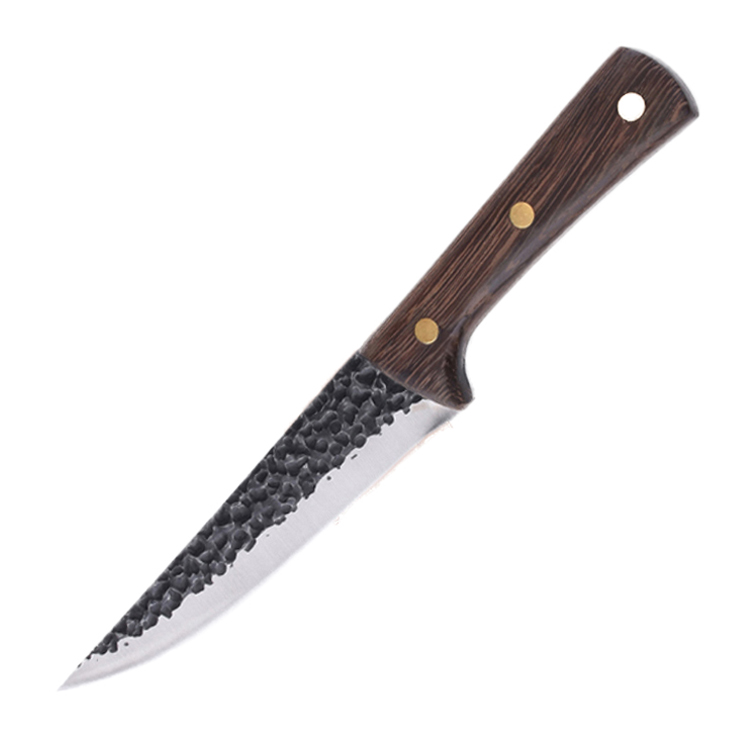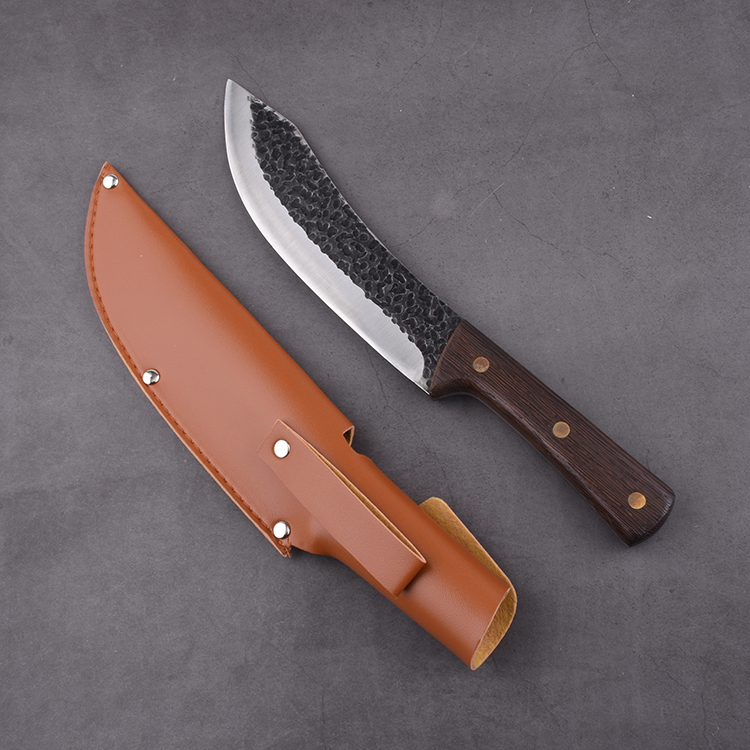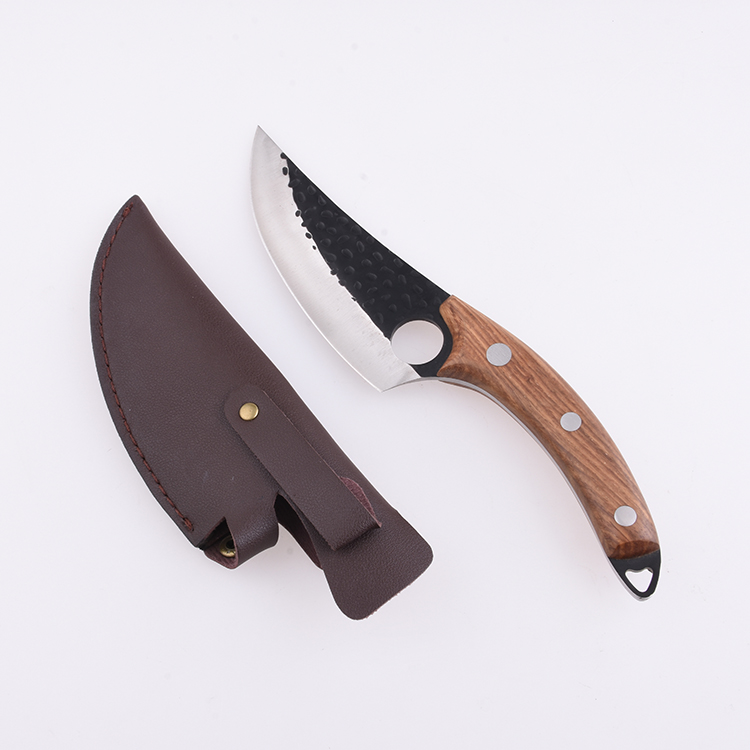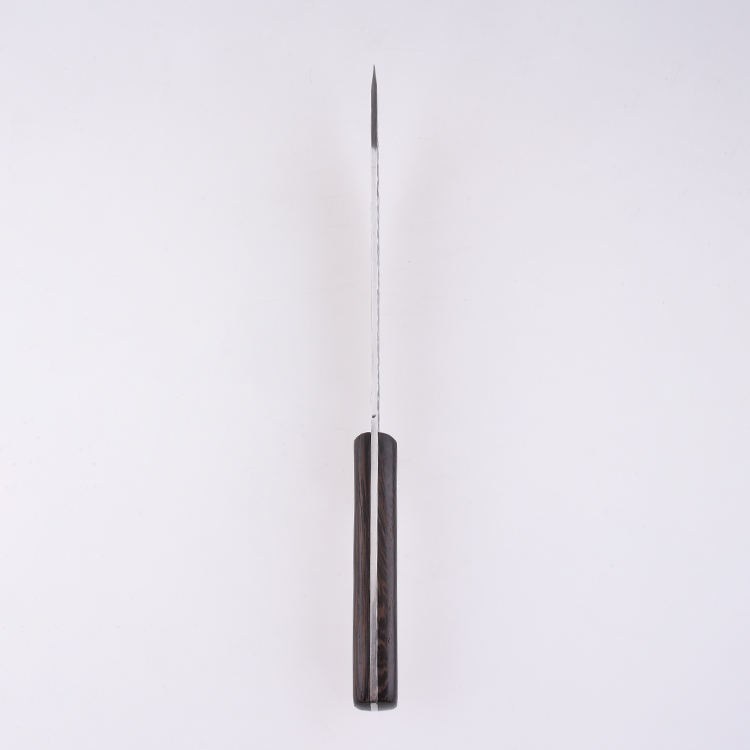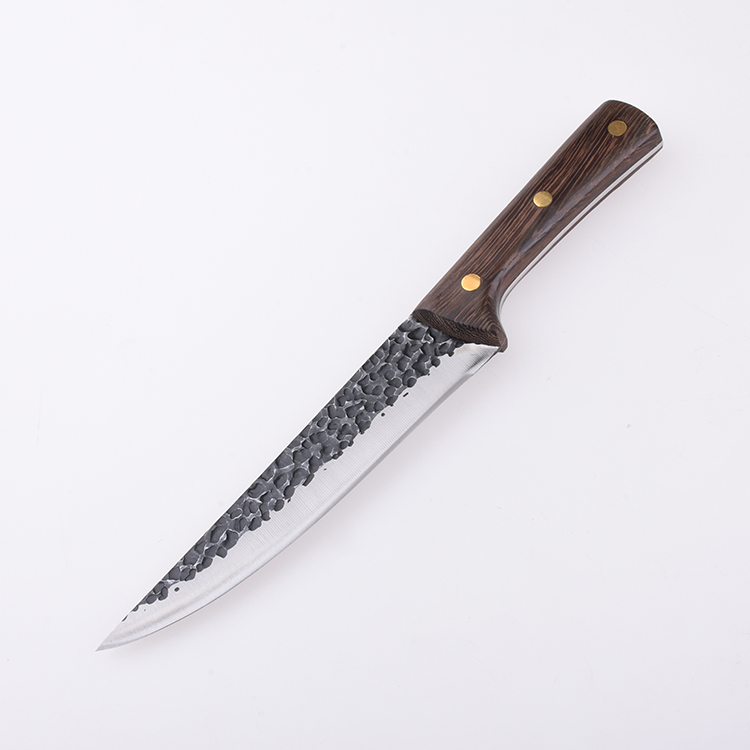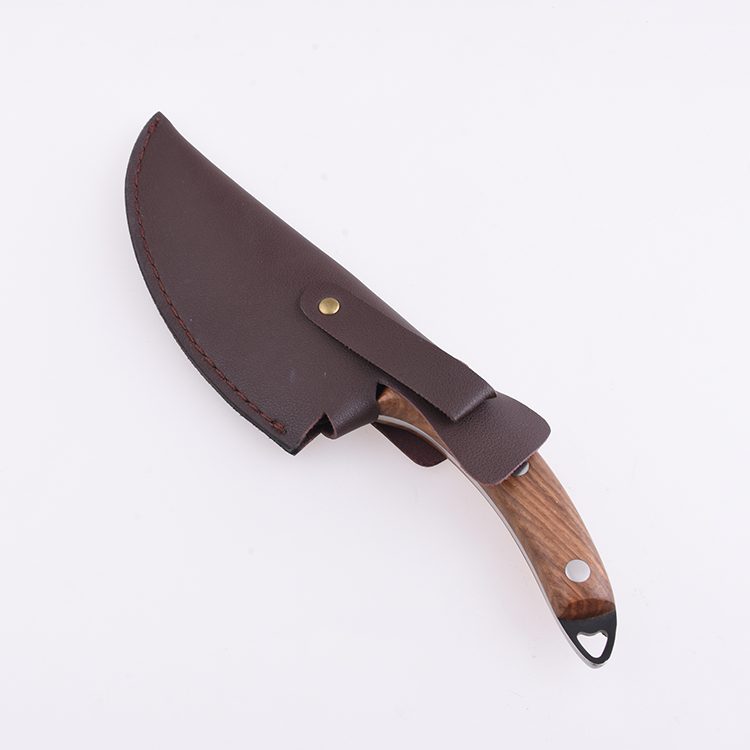An amateur in the kitchen will say that only one type of 정육점 칼 cuts through meat, slides over bones, and splits bones into two. However, professional Butchers will tell you that there are three significant categories of butcher knives: Boning, Breaking, and Slicing. What are these knife categories, and why do we need a butcher knife in our kitchen arsenal?
Butcher knives are versatile and can perform various daily kitchen tasks. This blog will dive deep into explaining categories of butcher knives, their versatility, maintenance, and buying guide. We will explain why you need three types of butcher knives in your kitchen, or maybe just one knife would suffice as an all-purpose tool.
Basic Characteristics of a Butcher Knife
Generally, manufacturers design a Butcher knife to cut through meat and bones regardless of its particular category. The butcher knife’s design and structure are unique compared to other kitchen knives. Let’s have a look:
Design and Structure of a Butcher Knife
Butcher knives come in different shapes and sizes depending on their origin. However, these knives have distinct names, and all serve the same purpose. Here are some of the popular butcher knife designs:
- Boning:These knives are ideal for initial cuts due to their shape. The boning knife has a pointy tip that widens as we move down towards the handle. The tip is best for entering the meat for the first cut and sliding between bones to initiate bone-meat separation.
- Bull Nose:This is the most versatile type of butcher knife, able to slice through meat and bone. The blade’s tip is shaped like a bull nose, giving it better stability when butchering. The blade is usually longer and wider with a curvature.
- Skinning Knife:Skinning knives are usually shorter for better stability. While skinning, butchers need to make a clean separation between meat and skin. Skinning knives efficiently enter between the meat and bone without damaging either.
- Cleaver:These are the typical butchering blades in meat stores. Their blades are rectangular and have a broad base.
Using a Butcher Knife for Heavy-Duty Cutting Tasks
The design of the butcher knife allows heavy-duty cutting tasks like cutting through bones. It can easily split bones and meat into two pieces. Versatile butcher knives can even cut through your favorite pizza. The quality and sharpness of these butcher knives make them multi-purpose.
Butcher Knife vs. Other Kitchen Knives
Putting a Butcher knife against other kitchen knives like Chef and Bread knives will give a better understanding of their purpose. Here is a table explaining the key differences between these knives:
| 특징 | Chef Knife | Bread Knife | 정육점 칼 |
| Usage Scenario | Vegetables, Fruits, Herbs, Fish | Pastries, Cakes, Bread | Bones, Meat, Cooked Meat |
| Shape | A wide blade that forms the tip | Serrated blade | Belly shape, bull nose tip, or thin and pointy |
| 재료 | 봄 여름 시즌 | 봄 여름 시즌 | High Carbon SS |
| 크기 | Around 8” | Around 10” | Between 6-10” |
| 무게 | 200gm | 150gm | 300gm |
| 블레이드 디자인 | Moderate Thickness | Thin Flexible Blade | Thick and Heavy |
| 가장자리 | Straight Edge | Serrated | Curved Edge |
| Cutting Motion | Rocking and Slicing | Sawing Motion | Chopping and Separating |
Unique Advantages and Scenarios of Using a Butcher Knife
A butcher knife is heavy and provides a balanced weight distribution. Bones are hard to cut, but a butcher knife can easily cut through them without sliding. Slipping and skidding off the bone can be dangerous, so butcher knives have a curved belly and decent weight.
A cleaver butcher knife is a decent-weight knife with a broad blade. It helps users pound the meat to tenderize it, and it’s easier to pick up ingredients or meat after cutting it with a cleaver.
The Versatility of a Butcher Knife
In a typical kitchen, meat, vegetables, bones, and fruit are cut. The variety of cutting operations emphasizes the need for a versatile knife to perform all these tasks. A butcher’s knife, especially one with a bullnose design, is convenient for kitchen tasks.
A bull nose butcher knife has a decent blade with a reasonable weight that supports all the operations required in a kitchen. Here are its advantages:
- Good weight for cutting through bones
- Curved belly ideal for rocking motion when chopping vegetables
- Tough blade that can handle wear and tear while maintaining a sharp edge
- Its considerable length can also help cut breads, pizza slices, etc.
Choosing and Buying a Butcher Knife
Selecting an ideal butcher knife requires careful daily evaluation of one’s requirements. If you are a professional butcher, you will need boning, bullnose, skinning, and cleaner knives. However, we recommend a more versatile option like the bull nose butcher knife in a home setup. Let’s look at the factors to consider when picking a butcher knife for your setup:
● Task Frequency
If you work in a professional butchery, consider buying a skinning, bull nose, boning, and cleaver for your workplace. In a kitchen, evaluate your most frequent operation and choose the knife based on its qualities. In general, a bull nose knife is a great start.
● Blade Length and Shape
If you always cut through pieces of meat and bones, consider a blade length and shape that is longer and more substantial and can hold good weight and balance.
● Blade Material and Strength
Butcher knives are best if they contain decent chromium with relatively higher carbon content. The material composition gives the blade better toughness against brute force.
● Weight
If you plan to cut through bones frequently, consider a knife with good weight, such as a cleaver. However, if your daily tasks include cutting vegetables or skinning meat, consider a skinning or bullnose butcher knife.
● Handle Material
A heavy knife requires a good grip, as one can easily injure themselves with a slippery or poorly designed handle. Handle materials include wood, synthetic polymers, or their combinations. Just ensure that they are a good shape and size for your hands.
Using and Maintaining a Butcher Knife
Buying a butcher knife is easy. However, maintaining one can take around 1hr of your monthly time. There are tons of tools that can help you maintain a knife and ensure its edge remains sharp.
Maintaining a Butcher Knife
- Try to store the knife in a sheath to avoid blade damage
- Avoid placing the butcher’s knife in a drawer full of utensils
- Dishwashers can reach up to 200°C and damage your knife material strength
- Use a wet grit stone with coarse and fine sides to maintain the blade edge once a month. Always slide on the gritstone, holding the knife at a 20° angle.
- Always clean your knife by hand and dry it before storing it to avoid corrosion.
It is efficient to use a Butcher Knife.
- Always use a soft cutting board and, if possible, place a wet towel underneath. It will provide flexibility and sharpness to your blade.
- Purchase a honing rod and straighten your blade after every cutting session.
- Always try to cut away from your body to avoid any injury
- After usage, store your butcher’s knife on a magnetic bar or a wooden knife block
Recommended Choices on the Market
Here are some of our top recommendations from the market:
1. Dalstrong Gladiator Series 14-inch Butcher & Breaking Cimitar Knife
The very long blade allows for easy cutting through large pieces of meat. Owing to the material strength and manufacturing technology, a single slide motion will result in an excellent cut.
KEY HIGHLIGHTS
- Hand Sharpened to 16-18° per Side
- Complete Tang Design for Maximum Stability
- High Chromium for Stain Resistance
- 14” Long Blade with Knuckle Clearance
2. SHIELDON Bull Nose Fixed Blade Butcher Knife (HH-0050)
There are many versatile butcher knives on the market for kitchen use. In comparison, SHIELDON takes the top spot primarily due to its excellent price/performance ratio and build quality. The knife offers corrosion resistance and excellent sharpening capability with 3Cr13 blade material.
KEY HIGHLIGHTS
- 1mm Thick, 200mm Long 3Cr13 Blade
- Wooden Handle with 18mm Thickness
- Excellent Curvature for Chopping and Meat Cutting
- Features a Leather Sheath for Blade Protection
3. Victorinox Fibrox Pro Curved Boning Knife
If you want something smaller and easier to handle, Victorinox Fibrox Pro Curved Boning Knife is an ideal choice. It can cut through flesh, hugging the bones, and provide equally great performance with vegetables and fruits.
KEY HIGHLIGHTS
- Patented Fibrox Textured Handle for Grip
- Flexible Stainless Steel for Sliding Over Bones
- Rigid Material that Holds Knife Edge
- 6” Length for Versatile Applications
The Role of Butcher Knives in Professional Kitchens
The professional environment of a restaurant or slaughterhouse requires quality products that maintain sharpness and have a long life. Butcher knives are an integral part of restaurants where meat is served. In a slaughterhouse application, all major types of knives are present, as specialized knives based on animal anatomy are needed.
In comparison, restaurants do not need to cut through the whole animal; they only need to cut through parts of the meat. Therefore, it’s best for restaurants to go for a versatile butcher knife instead of a regular kitchen knife, which cannot handle all the wear and tear.
Here are our recommendations for both applications:
- Slaughterhouse:Boning, Bull Nose, Skinning, and Cleaver Butcher Knives
- Restaurant:Bullnose or a Chef Knife
Introducing Shieldons OEM services
Are you looking for a high-quality Butcher knife? Shieldon, a leading outdoor knife manufacturer, offers high-quality butcher knives designed for professional chefs and avid home cooks. Their knives feature:
- Robust and sharp blades (8-12 inches) are perfect for efficiently breaking down large cuts of meat and tackling tough meats and cartilage.
- Ergonomic design: Ensures comfortable use during extended periods in the kitchen.
Sheldon’s Advantages
- Years of expertise: They guarantee durability, sharpness, and well-designed knives.
- Manufacturing & Trading Combo: Offers unparalleled quality and service.
- Customization options: We can tailor a knife, logo, and other details to fit your brand.
Are you looking to collaborate?
Request a quote and experience Shieldon’s superior craftsmanship firsthand.
결론
A butcher knife is a valuable addition to your kitchen arsenal. It can enhance your cooking efficiency and ease the problematic meat-cutting process. Many butcher knife forms exist, but we recommend a robust and versatile design to suit your daily tasks. Here are the three main types to consider:
- Boning Knife:It can provide stability to cut through meat and fruit. However, it cannot cut through bones.
- Bullnose Butcher Knife:Versatility is critical in bullnose butcher knives. They can cut through meat, bones, and vegetables. Getting used to the large blade and weight may require some time.
- Cleaver:It is the most loved Butcher knife in the Asian community primarily due to its ease of cutting through bones, meat, and other edibles. The balance of such knives is excellent for control.
We hope you find the right tools for your kitchen activities. Always check for reviews and carefully evaluate the specifications before making the purchase. Happy shopping!
자주하는 질문
1. How does the handle material affect the use of a butcher knife?
A: The handle material can be synthetic, wood, or a combination of different materials. The material’s surface finish and shape can directly affect a butcher knife’s handling capability. A loose grip can cause injury when cutting through bones and meat, so it is vital to consider a surface finish and shape that provides a good grip.
2. How does a butcher knife perform when cutting different types of meat?
A: Cutting through different types of meat can directly affect the performance of a butcher’s knife. The sliding motion may require higher or lower force based on the meat. Cow meat can be tender in specific locations, while it can be hard on others. A fish is a very soft meat that easily cuts with any knife. However, generally, a butcher knife is ideal for meat cutting.
3. Are there butcher knives specifically designed for specific cutting techniques?
A: Yes, there are butcher knives for Boning, Breaking, and Slicing. The cutting techniques may require specialized butcher knives designed for particular applications. Cleaver, Scimitar, Skinning, Ham Knife, Ham Spoon, and Lamb Splitter are butcher knife types with designs to cater specific cutting techniques.
4. How to choose a butcher knife suitable for home use?
A: Look for a knife with a medium length that provides good grip and stability while cutting. Mastering a longer-length knife is complex, and its applications are limited. A medium-length knife with around 8” bull nose life is excellent for versatile use in home kitchens.
5. What criteria do professional chefs use when selecting a butcher knife?
A: They look for material, weight, construction, balance, sharpness, and handle material when selecting a butcher’s knife. They also consider the brand and its reputation when selecting butcher knives. Choosing a perfect butcher knife will enhance efficiency, provide safety, and yield quality results.

